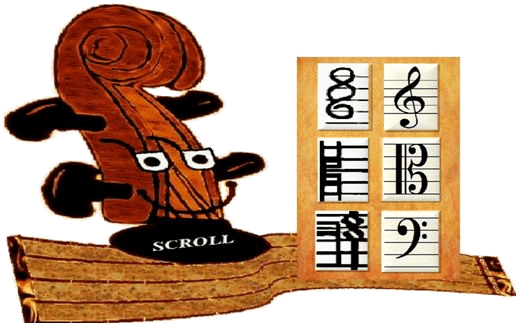
In walks a confident teenager saying, “Welcome, fellow musicians! Do you know how to read all the different Chiave?” [Chiave is Italian for Clef (s)].
We were used to reading only tabliture, (diagrams of strings and note locations). And, we also knew about the staff, but we had limited clef experience.
Being asked about knowing how to read all different Chiave (Clefs) was a little intimidating, because we only had tried once before to use a C – Clef. Our different ranges and differently tuned instruments clashed horribly!
Since the look on our faces answered the question he said, “ Then I guess I am going to have to teach you.” What followed was a description of the proportions of planet-orbit cycles, and our new friend/teacher showing us a toy that he had built to help him travel the forest without getting lost.
This device, called a “compass” had a string and a weight on it. He wished to experiment with it, by measuring the thickness and vibrations of the strings on our viols. He went on to tell us that this was the first time that he had seen so many differently sized viols at the same time and agreed to trade his clef knowledge for our allowing him to use our instruments to help his research.
The next bit of news was even more surprising. “You know the celebration isn’t until next weekend, right?” We all thought that we were there to perform that night. That was good, because we had to learn a whole new system of music notation in order to understand and interpret the music written for the double-celebration concert.
After showing us that different string length and thickness affected the ratio of musical pitch frequencies, he went on to teach us how locating different clef symbols on the staff is much more effective than tablature. We then understood why we were unsuccesful earlier, when we had tried to read the same clef on our instruments with their varied ranges and pitches.

Potential and Kinetic Energy The R’s of Remembering Practice Purpose Music Staff Evolution
Music Clef Origins Scroll History Peg Information Bowed String Instrument History
Friction Bass Tuning Mechanism Modern-Day Violin Family Bridges Through the Ages



